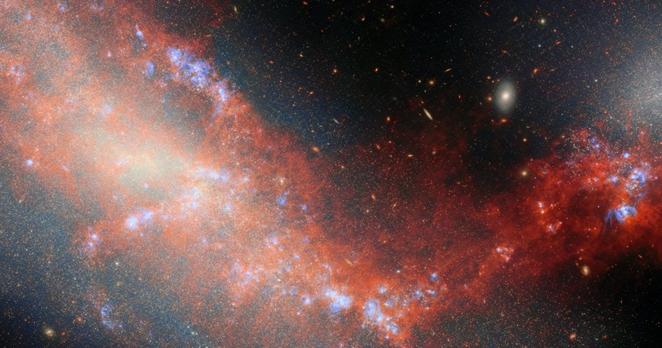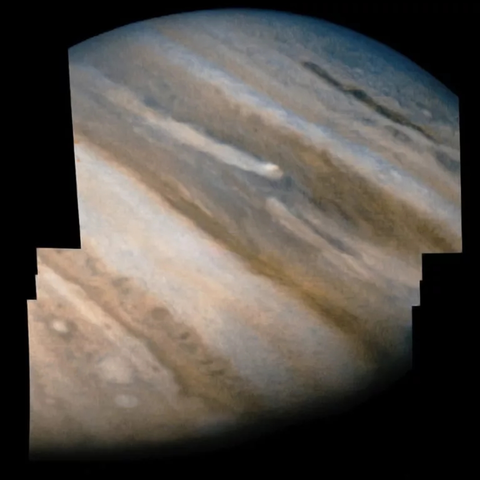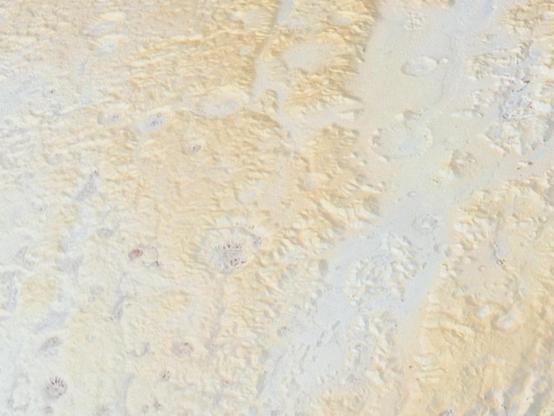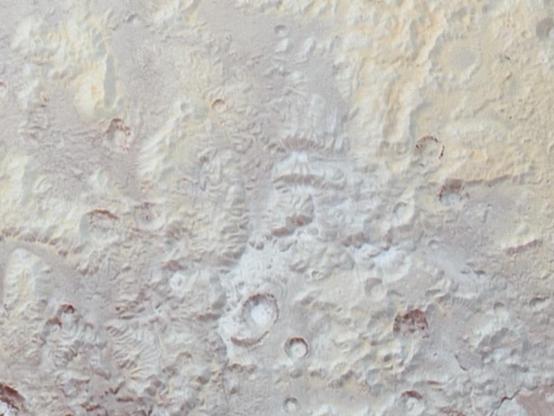‘Dancing’ dwarf galaxies spotted by James Webb Space Telescope
#nasa
On #ThisDayInHistory in 1973, the #Pioneer10 space probe from #NASA captured the first close-up images of #Jupiter. Its imager was damaged by heavy radiation, so it has taken work to reconstruct what it saw. (#Pioneer11 took better views the day before.) Here is what it sent us:
A bit of Pluto
#pluto #nasa #space #astronomy #science #plutopics
Student Art Murals at Johnson Celebrate 25 Years of Humanity in Space https://www.nasa.gov/centers-and-facilities/johnson/student-art-murals-at-johnson-celebrate-25-years-of-humanity-in-space/ #NASA #JohnsonSpaceCenter #InternationalSpaceStationISS
https://www.ufofeed.com/181755/representative-ty-mathews-highlights-nasa-internship-program-95-3-wktn/ Representative Ty Mathews Highlights NASA Internship Program – 95.3 WKTN #NASA
NASA Rover Detects Electric Sparks in Mars Dust Devils, Storms https://www.nasa.gov/missions/mars-2020-perseverance/perseverance-rover/nasa-rover-detects-electric-sparks-in-mars-dust-devils-storms/ #NASA #PerseveranceRover #Mars #Mars2020
Planned satellite constellations may swamp future orbiting telescopes https://arstechni.ca/DCLP #orbitalconstellations #space-basedtelescope #satellites #astronomy #starlink #Science #Hubble #Space #NASA
MSL 4726-4731 CC
© NASA/JPL-Caltech/LANL/CNES/IRAP/NeV-T
Gigapan - http://gigapan.com/gigapans/238524
GIGAmacro - https://viewer.gigamacro.com/view/DkejR6hqJjZuhzH5?x1=23257.00&y1=-4681.50&res1=24.23&rot1=0.00
Gigapan Website - http://www.nev-t-gigamacros.com/
#Mars #science #NASA
MSL 4727-4734 CC
© NASA/JPL-Caltech/LANL/CNES/IRAP/NeV-T
Gigapan - http://gigapan.com/gigapans/238525
GIGAmacro - https://viewer.gigamacro.com/view/arX7V9sbAwA3ikJM?x1=11824.00&y1=-16187.00&res1=35.23&rot1=0.00
Gigapan Website - http://www.nev-t-gigamacros.com/
#Mars #science #NASA
PERSEVERANCE 1688 © NASA/JPL-Caltech/MSSS/NeV-T
Gigapan - http://gigapan.com/gigapans/238526
GIGAmacro - https://viewer.gigamacro.com/view/3WGs1Wc3COW2CZ6B?x1=24697.94&y1=-4770.02&res1=6.77&rot1=0.00
Gigapan Website - http://www.nev-t-gigamacros.com/
#Mars #science #NASA
NASA Astronaut Jonny Kim Advances Research Aboard Space Station https://www.nasa.gov/missions/station/iss-research/nasa-astronaut-jonny-kim-advances-research-aboard-space-station/ #NASA #ISSResearch #General #HumansInSpace #InternationalSpaceStationISS
Hubble Seeks Clusters in ‘Lost Galaxy’ https://www.nasa.gov/image-article/hubble-seeks-clusters-in-lost-galaxy/ #NASA #HubbleSpaceTelescope
Live feed: https://www.youtube.com/watch?v=iYmvCUonukw
Current location: http://www.openstreetmap.org/?mlat=-13.1069&mlon=62.0277&zoom=2
Today's #APOD looks like it was made to be the wallpaper for someone's ultrawide gaming monitor or some other edgy setup XD
https://apod.nasa.gov/apod/ap251203.html
"Visualization: Near a Black Hole and Disk"
A bit of Pluto
#pluto #nasa #space #astronomy #science #plutopics
#Nestle wird hellhörig!
Im #Asteroid Bennu wurde nicht nur Ribose sondern auch Glucose gefunden.
#Nasa #space
https://www.nasa.gov/missions/osiris-rex/sugars-gum-stardust-found-in-nasas-asteroid-bennu-samples/
Flieger aus Lippe trifft sein großes Vorbild
Charlie Duke war der zehnte Mensch auf dem Mond.https://foxtrottsierra.de/realflight/flieger-aus-lippe-trifft-sein-grosses-vorbild/
Hazardous Material Summary Tables (HMSTs) https://www.nasa.gov/directorates/esdmd/hhp/hazardous-material-summary-tables-hmsts/ #NASA #HumanHealthAndPerformance
Toxicology Analysis of Spacecraft Air https://www.nasa.gov/directorates/esdmd/hhp/toxicology-analysis-of-spacecraft-air/ #NASA #HumanHealthAndPerformance
Der Saturnmond #Enceladus scheint ein langfristig stabiles thermisches Gleichgewicht zu besitzen, das durch die starke #Gravitation des Saturn angetrieben wird, eine Art #Gezeitenheizung.
Neben einem ganzen Cocktail aus organischen Verbindungen, der in seinem Ozean nachgewiesen wurde, nährt dies die Hoffnung auf außerirdisches Leben in unserem #Sonnensystem.
https://www.telepolis.de/article/Saturnmond-Enceladus-Ein-belebter-Ozean-unter-dem-Eis-11099752.html








